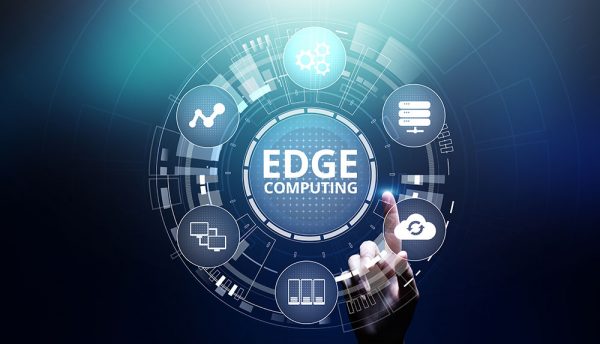The term ‘Edge Computing’ is now widely used among business leaders as we discover more about its underlying potential. Stephen Whatling, Chairman at Business Critical Solutions, discusses how Edge Computing is contributing to the development of the data centre landscape to support the growing demand for connectivity and availability.
The changing landscape
The data centre landscape is fundamentally changing and alongside the hyperscale development we are also seeing an increasing market towards Edge data centres to support a growing need for greater connectivity and data availability. While the decentralised data centre model has been around in various guises for some time, it fell out of favour for a lot of businesses as they sought to exploit the efficiencies of operating fewer, larger data centres.
However, the phenomenal growth of the Internet of Things (IoT) is driving a resurgence in its popularity. Cisco is predicting that in the five years up to 2022, 1.4 billion Internet users will have been added, there will be 10.5 billion more devices and connections and broadband speeds will have increased by over 90%. Only Edge networks can provide the high connectivity and low latency required by the IoT to meet users’ expectations and demands for instant access to content and services.
The rise of AI
In addition, the rise of AI and immersive technologies such as Virtual and Augmented Reality (VR/AR) is also a factor that will help drive this move. While not perhaps mainstream yet, many sectors are assessing the benefits. For example, in the manufacturing environment the now ubiquitous robots on many production lines can be improved and their role expanded by AI.
A report found that 92% of senior manufacturing leaders believe that the ‘smart factory’ will help them increase productivity and empower their staff to work smarter, but a similar Forrester report also found that only one in eight large manufacturing businesses are using any form of AI. However, these kinds of innovations require a lot of computing power and an almost immediate response as a single machine that ‘pauses for thought’ could create a knock effect that causes immeasurable damage to the factory, production line and productivity. Once again, Edge Computing is best placed to support this.
In the case of AI and AR, speed is an important factor. In the Edge, decision making is held closer to the point of need and as a result the reduction in latency between the device and the processing power enables a much faster response time. Equally important, the data itself can be better managed in an Edge environment. The data is often governed by local legislation and now that it can be held in smaller data centres closer to the point of use it becomes easier to meet the legal requirements in the local region.
Data security
One of the major factors that needs to be considered is data centre security, with cyberattacks increasing in both frequency and scale. Problems originating from the physical infrastructure have also been found to be behind outages in recent years. Some experts have suggested that Edge Computing potentially represents a soft underbelly for cybersecurity. For some, the use of the word ‘Edge’ has allowed users to assume the security of these systems is not as important as local or cloud systems. However, moving forward, clients will be expecting significant investment in security and disaster recovery processes as well as the physical maintenance and security of these localised data centres.
Investment in telecoms
Another key consideration is that the increasing adoption of Edge and cloud-based infrastructure for both social and business use is also placing greater demands on the distribution network in terms of latency, bandwidth and capacity. The increase in data over the next five years will place a lot of pressure on the telecoms network. It is the telecoms industry that will need to continue to invest and upgrade capacity to ensure that the infrastructure supports the growing demand for data flows to and from the Edge and the cloud. Our summer report, which is available to download from our website, also highlights this issue with three-quarters of respondents agreeing that the telecoms industry needed to provide this investment. Less than 2% of all those surveyed believed that the current infrastructure would be able to support the current predictions of growth in data. This is likely cause for concern.
The need for power
Similarly, these new data centres will need power. The thousands of servers across all connected countries will need to be located and designed with energy in mind. It is perhaps worth noting too that countries which can’t support the wider network demands will quickly fall behind in the race to realise the value of AI and AR.
The opportunity
There is no doubt that massive increase in the data that is available from billions of devices and the rise of AI is both an opportunity and a challenge for businesses. Companies that can handle the scale, analyse the data and monetise its true value will have a real advantage. Edge Computing will be able to handle more than a traditional network with many more transactions per second over many more locations and architectures, but how and when will this infrastructure be delivered?
Conclusion
The fact that half of our respondents believe Edge Computing will be the biggest driver of new data centres, tallies with our own convictions. We believe that the Edge of the network will continue to be at the epicentre of innovation in the data centre space and we are seeing a strong increase in the number of clients coming to us for help with the development of their Edge strategy and rollouts.
In our view, the recent trend of migrating computing power and workload from in-house, on-site data centres to remote cloud-based servers and services will reverse a little. The next evolution, led by the need to make more and more decisions with little or no discernible delay, will see a move towards computing power being closer to the source of the user and the data that needs to be processed. More and more connected devices relying on the Edge means more and more data centres, probably smaller than the typical cloud data centre but no less important. With future trade, manufacturing, autonomous vehicles, city traffic systems and many other valuable applications relying on Edge Computing, the security and maintenance of these systems will be paramount. However, there is no doubt that Edge Computing forms part of the future data centre landscape.
Click below to share this article




